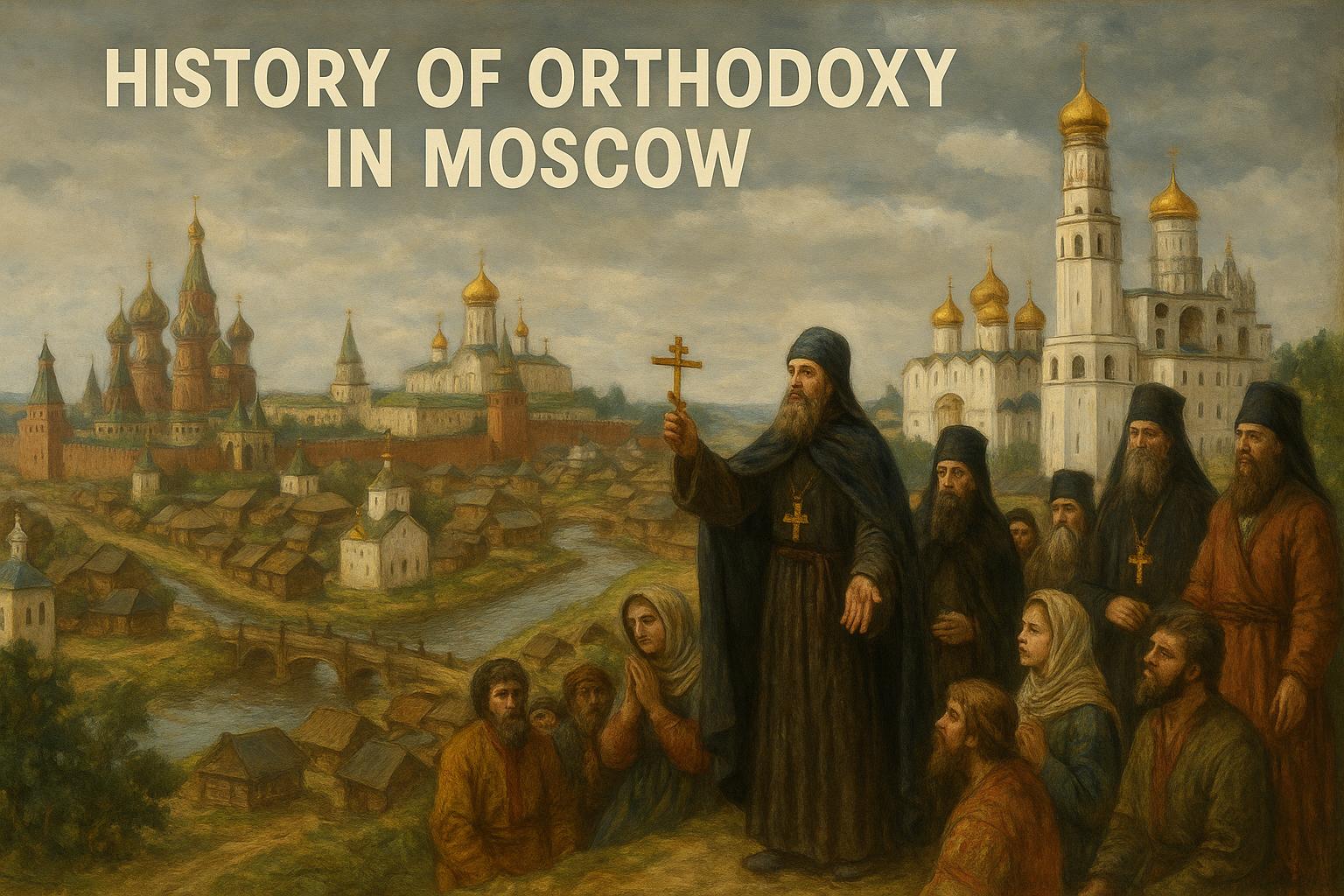Early Beginnings
The history of Orthodoxy in Moscow is a profound journey that dates back to the late 11th century. During this era, the region was part of a larger entity known as Kievan Rus’. This early expression of Russian Orthodox Christianity laid the groundwork for what would eventually become a deeply ingrained cultural and spiritual tradition in Moscow. As the 13th century unfolded, a series of significant transformations became evident, marked distinctly by the Mongol invasions which reshaped both political and religious landscapes drastically. Despite facing various trials during these tumultuous times, the Orthodox faith managed to uphold its spiritual grip, nurturing its influential roots in the heart of Moscow.
The Rise of Moscow as a Religious Center
Emerging as a noteworthy center for Orthodox Christianity in the 14th century, Moscow’s evolution in religious standing stood parallel to its political ascendancy. This era witnessed the remarkable construction of the Kremlin, serving not just as a stronghold but as a focal point for religious activities. A watershed moment arrived in 1325 when the Metropolitan of Kiev relocated to Moscow, a clear indication of Moscow’s swelling prominence in the realm of religious affairs. This relocation served as a harbinger of the city’s eventual role as a nucleus of Orthodoxy, setting the stage for Moscow to become a spiritual beacon that echoed the faith’s enduring legacy.
The Role of Ivan III
Moscow’s religious ascendancy was further solidified under the reign of Ivan III, known historically as Ivan the Great. His reign was not merely a period of territorial expansion but a profound epoch that reiterated Moscow’s stature as a religious epicenter. By marrying Sophia Palaiologina, who was the niece of the last Byzantine emperor, Ivan advanced the notion of Moscow as the “Third Rome.” This conceptualization was symbolic of Moscow’s assumption of spiritual heritage, following in the esteemed lineage of Rome and Constantinople. This union brought forth notable architectural and cultural advancements, leading to the construction of significant churches within the Kremlin, further cementing Moscow’s stature in the Orthodox Christian world.
The Time of Troubles
The dawning of the 17th century ushered in what is referred to historically as the Time of Troubles, a period beset with political upheaval and foreign interference. Nonetheless, the Orthodox faith remained a core, unifying element for the Russian populace. In the midst of these adversities, Orthodoxy’s influence not only persevered but played an instrumental role in galvanizing support against foreign occupation. The resilient strength of the faith during these troubled times illustrated how deeply interwoven Orthodoxy was within the socio-political fabric of Moscow.
The Synodal Period
A pivotal transformation occurred in the early 18th century with the establishment of the Holy Synod by Peter the Great. This era signaled a critical shift in the administration of the Orthodox Church, marking the cessation of the patriarchal system and introducing a structure that placed the church under state supervision. The Synodal period, although characterized by increased state intervention, revealed the adaptive capabilities of the Orthodox Church in Moscow. It managed to maintain its cultural and spiritual influence throughout the city and beyond, showcasing an enduring legacy that withstood significant systemic changes over time.
Twentieth Century and Beyond
The 20th century presented formidable challenges for Orthodoxy in Moscow as the emergence of the Soviet regime brought about state-enforced atheism and a severe repression of religious practices. These circumstances presented an arduous test for the enduring faith, as religious structures faced detrimental disruptions. However, with the dissolution of the Soviet Union, a renaissance of Orthodoxy emerged. This resurgence symbolized not only a revival of religious practices but also reaffirmed the historical significance of Moscow as a cornerstone of Russian spiritual life. Today, the city is home to numerous active Orthodox churches, embodying a renewed vitality and preserving its legacy as a central pillar of the country’s spiritual domain.
For further exploration into the intricate historical narratives and spiritual landscapes, engaging with resources from established historical societies or delving into academic publications that delve into Eastern European religious studies could provide more comprehensive insights. Embarking on such a scholarly journey offers a deeper understanding of the profound impact and evolution of Orthodoxy in Moscow’s historical and cultural milieu, further illuminating its significant role in shaping the spiritual and cultural trajectory of the region.

